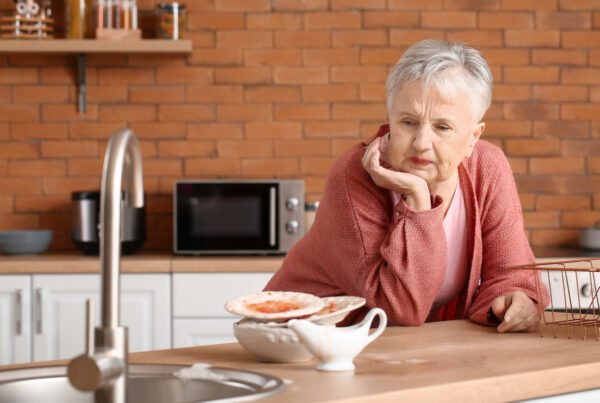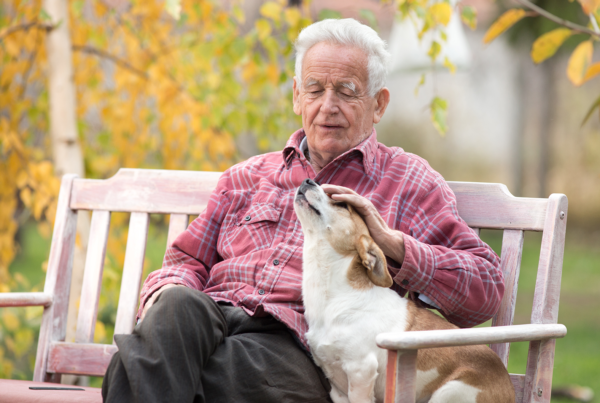Chronic wounds represent a serious risk in older adults. The longer that a wound remains exposed, the greater the risk of infection. This is particularly true for seniors, who may lack the mobility or mental capacity to properly care for their own injuries, or who have impaired wound healing.

If an infection takes hold, the outcome can be much worse for older adults compared to younger people or children.
Weakened immune systems can result in a rapid spread of infection, so it’s crucial that wound care for elderly patients is taken seriously.
What kind of wounds are common in the elderly?
There are a number of wounds that occur in older adults, though some are more common than others.
Simple injuries that are not properly looked after can result in a chronic wound that doesn’t heal properly, or heals at a very slow rate, creating the risk of complications.
This is why proper skin wound care is so important.
Here are some of the most common chronic wounds seen in elderly patients:
- Neuropathic ulcers: These ulcers, such as diabetic foot ulcers, can present in people with diabetes. Due to reduced circulation in the extremities, skin heals more slowly. They can also occur more frequently and go unnoticed, as diabetes damages the nerves in the feet, causing loss of sensation.
- Venous leg ulcers: These ulcers usually occur on the inside of the leg. They’re caused by high pressure in the veins, which can result from weakened valves that cause blood to leak backwards and pool in the legs.
- Arterial ulcers: These affect the arteries, as the name suggests. With poor circulation, patients can develop ulcers resulting from a lack of blood flow to the lower extremities.
- Ischemic ulcers: This type of ulcer can occur when a patient’s legs receive an insufficient amount of blood. This causes cell death, which damages tissue.
- Pressure ulcers: When elderly patients lose mobility, they can’t reposition themselves as easily. Too long spent lying in the same position can lead to pressure sores developing where bone compresses skin.
All of these conditions are relatively common in the elderly and require constant attention from healthcare staff who have to keep the site well-dressed and sterile.

What are the latest innovations in wound care for the elderly?
Fortunately, innovations in chronic wound care are making it easier for healthcare staff to attend to injuries and effectively reduce the risk of infection in wound management.
- Bioactive dressings: These specialised dressings are treated with active substances that play a part in wound healing. Among other things, they may contain a number of compounds and substances that include:
- Antimicrobials
- Collagen
- Elastin
- Silicone
- Hydrocolloid dressings: These wound dressings contain a gel that moistens the surface area of the wound, creating a moist wound environment that promotes the healing process. Meanwhile, they also form an airtight barrier around the wound, preventing bacteria, moisture, dirt and other foreign bodies from being able to penetrate the wound.
- Medicated bandages: Zinc paste bandages have shown promise in venous leg ulcers, though care must be taken to ensure that they don’t cause undesirable reactions. The zinc contained within has anti-inflammatory and antibacterial properties that help to keep wounds sterile and promote skin growth factors.
- Shockwave therapy: This is a kind of noninvasive therapy that uses acoustic shockwaves to encourage the skin’s natural healing processes. Clinical studies have proven the effects on tissue repair in different kinds of wounds.
Other innovations have been seen in the area of wound assessment and treatment, too.
Negative pressure wound therapy involves removing fluid and infection from within a wound, by using a vacuum pump, to promote healing.
Pressure mapping involves a pressure-sensitive surface that indicates where a patient is most likely to develop chronic wounds.
And topical oxygen therapy can harness the power of oxygen to treat a range of wound types, where traditional methods have failed.
Helping elderly patients with wound healing
Proper wound care for the elderly is important, not just to expedite the recovery process, but to maintain good health and reduce the risk of complications associated with an infected wound that can negatively affect a person’s health and wellbeing.
If you, or someone you know is experiencing trouble with wound care and delayed wound healing, please contact your GP or health professional for assistance.









